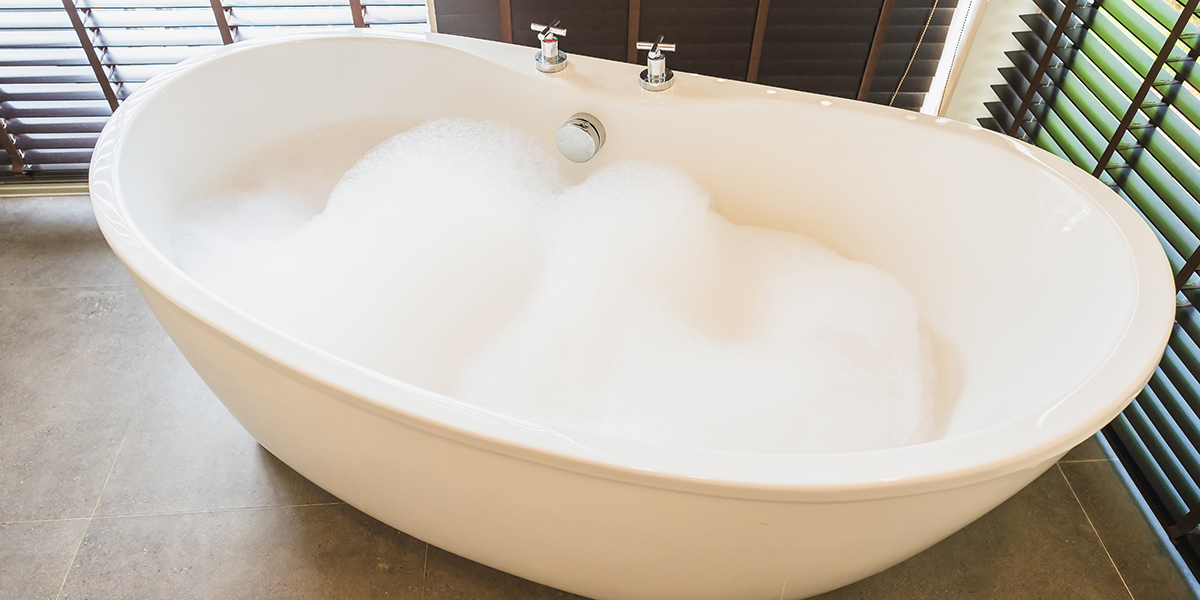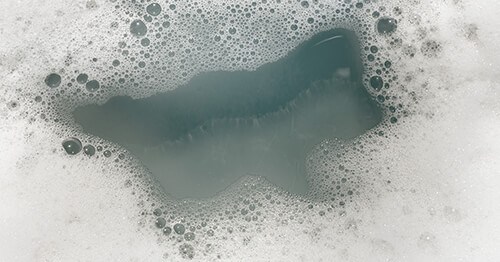Uncovering the Causes of Sewage Backflow in the Bathtub
Uncovering the Causes of Sewage Backflow in the Bathtub
Blog Article
Have you been trying to find help about Water Coming up Bathtub Drain?

Sewage backup in the tub can be an upsetting and unhygienic trouble for any type of homeowner. Not just is it bothersome, however it additionally presents significant health and wellness dangers and shows underlying issues with the plumbing system. Understanding why sewage is coming up via the bath tub is vital for taking ideal action to attend to the issue properly.
Intro to the Problem
Recognizing the Issue
When sewer draws back up right into the bath tub, it's a clear indicator of an issue with the water drainage system. The wastewater that ought to be streaming away from your home is rather finding its way back into your space, which can lead to substantial damage and carcinogen.
Possible Reasons
Numerous factors can add to sewer back-up in the bathtub. From obstructions in the sewage system line to concerns with the plumbing facilities, determining the origin is important for locating a service.
Typical Reasons for Sewage Backup
Blockages in the Drain Line
One of one of the most usual sources of sewer back-up is a blockage in the sewage system line. This can happen due to the buildup of particles, grease, or international items in the pipes, avoiding appropriate flow and causing sewage to support right into your tub.
Tree Root Intrusion
Tree roots looking for dampness and nutrients can penetrate sewer lines via tiny fractures or joints. In time, these roots can expand and increase, triggering considerable damages to the pipes and causing sewage back-up concerns.
Aging Infrastructure
Older homes might have obsoleted plumbing systems that are more vulnerable to deterioration, cracks, and deterioration. As pipelines age, they come to be much more prone to leakages and obstructions, boosting the probability of sewage back-up incidents.
Heavy Rainfall or Flooding
Throughout durations of heavy rainfall or flooding, the sewer system may end up being overloaded with excess water, creating back-ups and overflows. This can lead to sewage backing up right into bathtubs and other fixtures inside the home.
Wellness Dangers Connected With Sewage Back-up
Contamination of Water
Sewer back-up can pollute the water in your home, positioning a major health and wellness threat to you and your household. Exposure to infected water can cause intestinal problems, skin infections, and other ailments.
Spread of Condition
Sewer includes harmful microorganisms, viruses, and parasites that can cause a series of conditions, including hepatitis, cholera, and gastroenteritis. Entering contact with sewage or contaminated surfaces places you at risk of infection.
Mold and mildew Growth
Moisture from sewage backup can develop suitable problems for mold development in your home. Mold and mildew spores can worsen respiratory system problems and create allergies in delicate people, making punctual cleaning important.
Indicators of Sewer Backup
Foul Odors
Undesirable odors emanating from drains pipes or fixtures, specifically in the shower room, might show sewage back-up issues. These smells are often solid and persistent, indicating a problem that requires instant attention.
Slow Draining Fixtures
Bath tubs, sinks, and toilets that drain pipes gradually or not whatsoever could be experiencing sewer back-up. If numerous components are impacted all at once, it's likely that the problem stems from a typical factor, such as the primary sewage system line.
Gurgling Sounds
Weird gurgling or gurgling sounds originating from drains pipes when water is running somewhere else in your house are a measure of air entraped in the plumbing system. This air buildup can result from sewer back-up and ought to be checked out quickly.
Immediate Actions to Take
Shutting Off Water System
In case of sewer backup, it's essential to switch off the supply of water to avoid more contamination and damage. Situate the major water shutoff valve in your home and closed it off until the problem can be settled.
Calling a Professional Plumber
Managing sewer backup is not a DIY work. Call a licensed plumber with experience in handling sewage-related concerns to assess the circumstance and do required fixings or cleanings.
Staying Clear Of Contact with Infected Water
Until the sewage backup is settled, prevent contact with infected water to prevent the spread of germs and virus. Wear protective equipment if you need to be in the affected area and clean your hands extensively later.
Preventive Measures
Routine Upkeep of Sewer Lines
Schedule regular evaluations and upkeep of your drain lines to determine and deal with potential issues prior to they escalate right into significant troubles. This can include clearing out debris, inspecting for tree root breach, and fixing any damaged pipes.
Setting Up Bayou Shutoffs
Think about setting up bayou valves in your plumbing system to prevent sewer from flowing back into your home throughout durations of heavy rainfall or flooding. These shutoffs instantly close when water draws back up, shielding your residential or commercial property from contamination.
Appropriate Disposal of House Waste
Avoid flushing anything aside from bathroom tissue and human waste down the bathroom to avoid blockages and clogs in the sewage system line. Dispose of grease, oil, and other home chemicals properly to lessen the danger of plumbing issues.
Tidying up After Sewer Backup
Disinfection Procedures
Extensively sanitize and sanitize impacted locations after sewage back-up to get rid of hazardous bacteria and protect against mold growth. Use ideal cleaning items and safety gear to make certain secure and efficient cleaning.
Reconstruction of Affected Locations
Repair any type of damages to floor covering, wall surfaces, or fixtures brought on by sewer back-up. Relying on the level of the damages, you might require to change carpets, drywall, or various other materials to restore your home to its pre-loss problem.
Why is Sewage Coming Up Through Your Bathtub?
Reasons You May Have Sewage in Your Bathtub
All the drains in your home lead down different pipes to get to the main sewer line. If you’re seeing sewage in the bathtub, the problem is that the main sewer line is clogged up, which is causing the water running through other drains to be pushed back into other pipes. The problem isn’t the bathtub, but the main line. The sewer line can get backed up by anything that goes down the drain, from food waste, hair and soap particles to jewelry or children’s toys. Tree branches or dirt can also impact the sewer line. If you’re seeing sewage in the bathtub, you have a big problem that usually needs a professional plumber. Trying to fix this problem without the right tools or knowledge can lead to bigger plumbing problems.
Fixing a Clogged Sewage Line
Although you shouldn’t try to fix the clogged sewer line on your own, you may be able to mitigate the issue until you can get a plumber to your home. A plunger isn’t going to help, because it won’t be able to reach the sewage drain to unblock the problem.
Turn Off Water
Find the main shutoff valve to your home to turn off the water. This prevents more water from going down the drain which is only going to flow back into your bathtub.
Snake the Toilet and Drain
Start by using a drain pipe snake to clean out the toilet drain. Rotate the snake clockwise when you push the snake down. As you pull it out, the snake should spin counterclockwise. Follow up by snaking out the bathtub drain. If you are successful, both the toilet and shower will drain efficiently. If you’re not successful, you probably have a bigger problem than your tools and experience can manage.
Contact a Professional Plumber
Pros have the tools to find the source of the problem and the experience to manage big blockages without causing more damage to your pipes. It can save you a lot of stress by contacting the professionals sooner rather than later.
Identify the Early Signs of a Clogged Sewage Line
If you’re gearing up for a holiday family gathering or just want to avoid the hassle of a clogged sewage line in your home, make sure you recognize the signs of a clogged sewer line.
Slow drains are a sign of a sewer line problem. Gurgling drains from any drain in your home indicate that you may have an obstruction in the drains. If your toilet keeps getting clogged, it might be a problem with the sewer line. When you see laundry water or water from the dishwasher in different sinks in the home, it’s an indication that your sewer drain is beginning to get backed up. These symptoms can often be “fixed” temporarily to get through a day or week before you start seeing the same problem. When it comes to plumbing problems, you want to fix the root of the problem instead of muddling through. The clog will not go away on its own.
https://handymanconnection.com/mississauga/articles/why-is-sewage-coming-up-through-your-bathtub/

Hopefully you enjoyed reading our article about . Many thanks for taking a few minutes to read our content. If you please take the opportunity to distribute this post if you liked it. Thank you for being here. Revisit us soon.
Further Details
Report this page